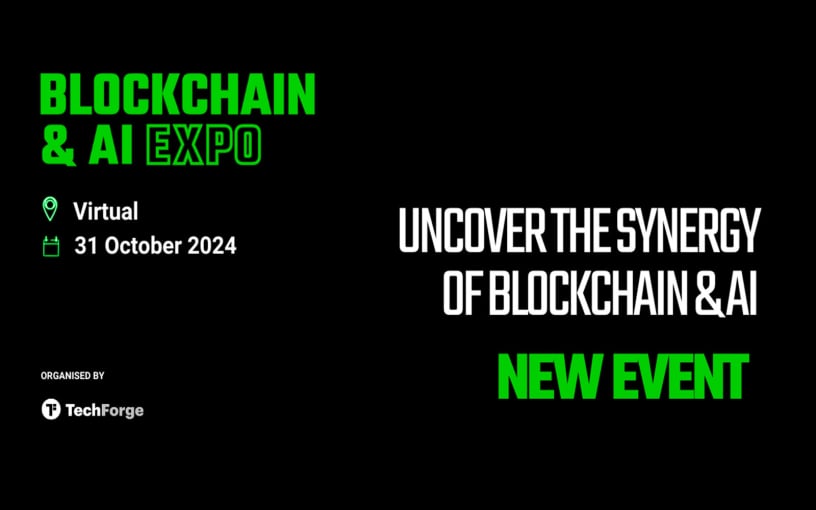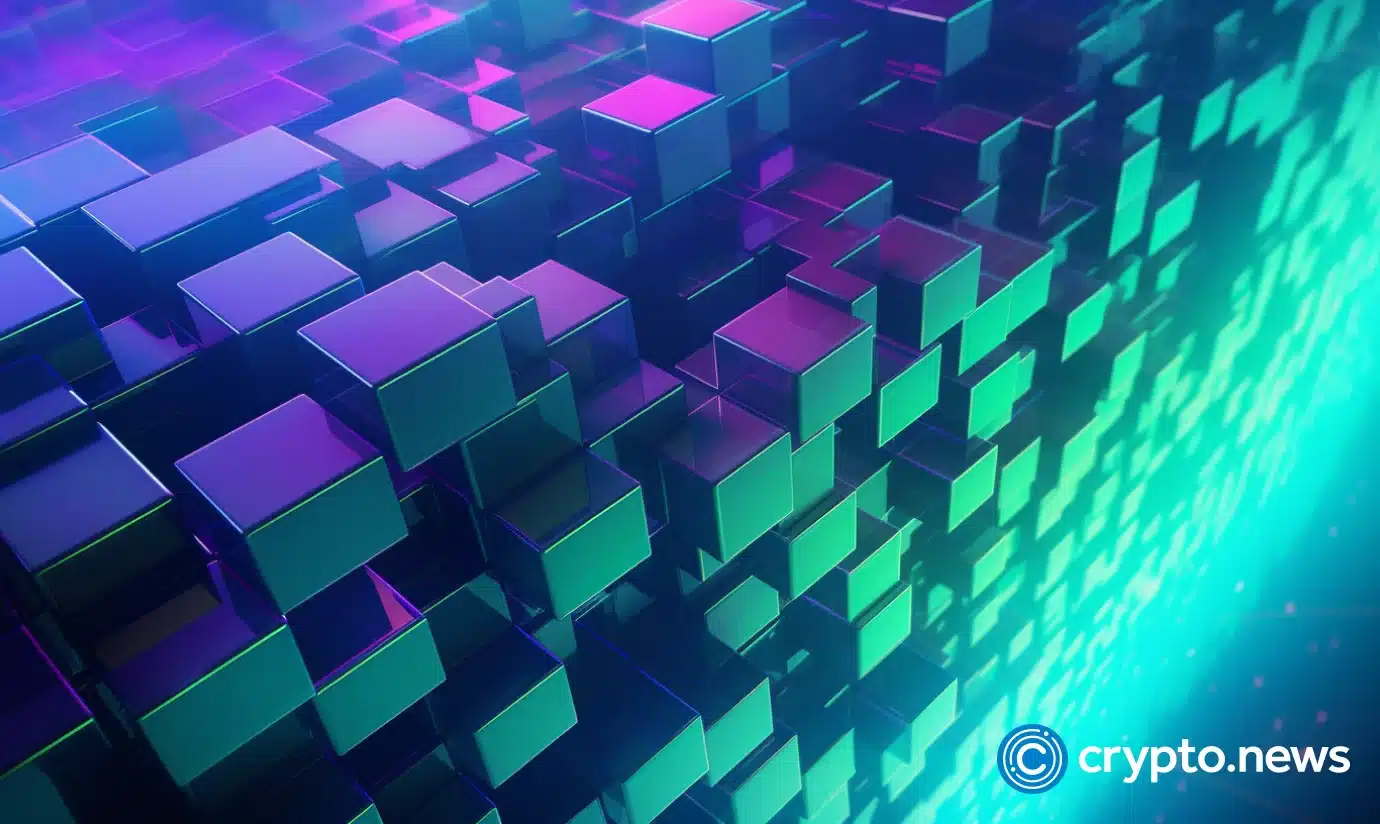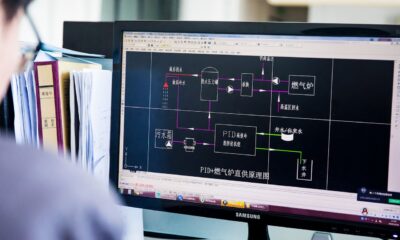News
L’intervista al CEO di MultiversX (ex Elrond)

In occasione dell’evento parigino Proof of Talk di cui The Cryptonomist è stato media partner, abbiamo realizzato un’intervista con Beniamin MincuCEO e co-fondatore di MultiversX (ex Elrond).
Beniamin Mincu è un imprenditore leader del web3 e CEO fondatore di MultiversX. In quanto nome influente nello spazio blockchain, Beniamin è responsabile dell’incursione di MultiversX nella creazione di soluzioni L1 scalabili, concentrandosi su aree di sicurezza e interoperabilità cross-chain, tokenizzazione degli asset e catene sovrane.
Sotto la sua guida, l’attenzione di MultiversX al servizio delle imprese e della comunità di sviluppatori ha contribuito a stabilirlo come uno dei primi 100 progetti L1 in grado di elaborare un massimo di 263.000 transazioni al secondo, con un ecosistema in crescita di oltre 8.200 dApp e 3.200 nodi.
Prima del suo periodo in MultiversX, Beniamin ha co-fondato e guidato Metachain Capital, un fondo di investimento di asset digitali focalizzato sul supporto dell’innovazione nello spazio blockchain attraverso capitale, connessioni chiave, consulenza strategica e altro ancora con investimenti di Polkadot, Binance e Tezos, tra gli altri.
Qual è la tua visione a lungo termine per MultiversX e come vedi che si evolverà nei prossimi 5-10 anni?
A MultiversX, stiamo creando l’infrastruttura necessaria per supportare l’attività on-chain su scala Internet in più settori e settori verticali e allontanare lo spazio blockchain da un’esperienza altamente isolata e frammentata, caratterizzata da un throughput limitato e da garanzie di sicurezza inadeguate. Ciò che ci consente di farlo è la tecnologia di sharding sottostante che garantisce un’architettura efficiente per tutto ciò che è digitale, che si traduce in una rete veloce e sicura pur essendo a emissioni di carbonio negative.
Puoi condividere alcune applicazioni e partnership del mondo reale che hanno utilizzato con successo la blockchain MultiversX?
Una delle nostre prime app principali, che ha già raccolto terreno nello spazio Web3 e oltre, utilizzata da milioni di persone in tutto il mondo, è xPortal, un portafoglio digitale per la finanza, esperienze on-chain e molto altro ancora. xPortal astrae qualsiasi complessa interazione blockchain e fornisce un’interfaccia semplice e intuitiva che è alla pari con quella di qualsiasi applicazione Web2.
Naturalmente, il nostro ecosistema, che attualmente conta oltre 8.000 app, è molto più ampio dei semplici pagamenti crittografici e include giochi Web3, mercati per risorse digitali, DeFi, bridge, launchpad, tokenizzazione o risorse del mondo reale, strumenti per sviluppatori e molto altro ancora.
Un altro esempio di progetto che utilizza la blockchain MultiversX è PlayFi, un progetto GameFi rivolto a oltre 3 miliardi di giocatori a livello globale che consente agli sviluppatori di creare giochi web3 funzionalità in aggiunta ai giochi tradizionali. Questo, in sostanza, crea un’intersezione tra GameFi e i giochi tradizionali simile a un torneo Fortnite senza autorizzazione.
La semplicità e la facilità di sviluppo del nostro ecosistema si riflettono nel modo in cui MultiversX è ora il primo rete blockchain per lo sviluppo di giochi, con 263 eventi GitHub degni di nota rispetto al secondo classificato, i 150 eventi GitHub di Decentraland.
In che modo MultiversX si differenzia da altre piattaforme blockchain come Ethereum, Solana o Polkadot?
Essendo basato sulla tecnologia di sharding, MultiversX è l’unica blockchain veramente scalabile in grado di crescere con la domanda ben oltre le capacità di altre reti. Inoltre, gli sviluppatori sono fortemente incentivati sulla rete, poiché ricevono il 30% delle tariffe del gas quando viene richiesto il loro contratto intelligente.
Tra le altre caratteristiche che distinguono MultiversX c’è il modo in cui supporta la facilità di sviluppo per i nuovi arrivati alla tecnologia blockchain. Ad esempio, la nostra partnership con Tencent Cloud, AWS e Google Cloud ha portato alla creazione di una soluzione di infrastruttura blockchain che consente lo sviluppo di applicazioni senza la necessità di iniziare da zero. Ciò riduce al minimo l’inconveniente di implementare e gestire i nodi dell’infrastruttura blockchain MultiversX, risparmiando ore di ricerca e pratica.
MultiversX è noto per il suo elevato throughput. Potete spiegare la tecnologia alla base di tutto ciò e come garantisce la scalabilità senza compromettere la sicurezza?
Utilizziamo la tecnologia di sharding per moltiplicare le capacità della rete, consentendo casi d’uso ad alte prestazioni sulla nostra infrastruttura L1 e potenzialmente centinaia di L2 che esplorano catene sovrane e cercano di garantire scalabilità e interoperabilità. Ciò comporta la suddivisione della rete in parti più piccole e più gestibili, mantenendo sicurezza, velocità, costi trascurabili ed efficienza energetica nei momenti di attività esponenziale.
Le soluzioni basate sulla tecnologia di sharding come le catene sovrane vanno oltre un solo verticale e si espandono nei settori DeFi, giochi, sanità e imprese. Nei giochi, ad esempio, un throughput elevato e una bassa latenza, combinati con commissioni di transazione regolabili, consentono modelli di business e gameplay radicalmente diversi.
Garantiamo ulteriormente la sicurezza della nostra soluzione scalabile tramite 2FA on-chain, che richiede due forme separate di verifica che proteggono le risorse digitali. Anche nel peggiore dei casi in cui la frase segreta venisse compromessa, gli sfruttatori non sarebbero in grado di spostare fondi senza la co-firma della funzione Guardian.
Quali passi stai intraprendendo per attirare sviluppatori e progetti da costruire sulla piattaforma MultiversX?
Le catene sovrane forniscono una base solida e scalabile per costruire la prossima generazione di dApp e l’interoperabilità di L2 con le principali reti blockchain come Ethereum, Bitcoin E Solana. Ciò attira particolarmente gli sviluppatori che desiderano sfruttare i punti di forza di più ecosistemi per creare prodotti più versatili e potenti per il consumo dell’ultimo miglio. Per incoraggiare ulteriormente lo sviluppo delle catene sovrane e supportare gli sviluppatori, abbiamo predisposto un programma di sovvenzioni da 1 milione di dollari per i costruttori.
Garantiamo inoltre che vengano adottate misure aggiuntive per facilitare un percorso di costruzione senza interruzioni per potenziali progetti e sviluppatori sulla rete MultiversX. Con una libreria di risorse per sviluppatori completa disponibile, gli sviluppatori possono trovare tutta la documentazione necessaria, le risorse GitHub e StackOverflow.
In che modo MultiversX si sta muovendo nel complesso panorama normativo e quali sono le tue opinioni sul futuro della regolamentazione blockchain?
Siamo sempre stati in contatto con regolatori e legislatori e crediamo che la soluzione migliore sia facilitata dalla collaborazione con più parti interessate, compresi i funzionari governativi. Un modo in cui stiamo cercando di rilanciare iniziative pubblico-private è mostrando come la tecnologia blockchain possa essere utilizzata a livello istituzionale per una maggiore efficienza e trasparenza o semplicemente per consentire diversi tipi di coinvolgimento con i propri utenti o elettori. Ad esempio, abbiamo assistito al lancio del primo mercato NFT istituzionale in Romania su MultiversX, con più partecipanti del settore pubblico che contribuiscono alle raccolte.
Inoltre, sebbene la regolamentazione sia inevitabile, crediamo fermamente che debba essere coordinata con gli attori chiave del settore per produrre i migliori risultati per il pubblico, continuando al tempo stesso a incoraggiare l’innovazione. Con la blockchain, la collaborazione tra più stakeholder è fondamentale. Vediamo che molte entità tradizionali stanno iniziando a realizzare il potenziale di risparmio sui costi dei sistemi basati su blockchain e la creazione di un ambiente che promuove la collaborazione tra funzionari pubblici, organizzazioni private, startup tecnologiche e altre entità legate alla blockchain guiderà l’innovazione e incoraggerà gli investimenti. e fornire le prime economie di scala.
Quali misure sono in atto per garantire la sostenibilità ambientale della rete MultiversX?
Dal 2021, compensiamo più CO2 di quanto sia attribuibile alla nostra impronta energetica. La nostra impronta di carbonio annuale generata dallo sviluppo e dalle operazioni dei prodotti è di circa 5.253 tonnellate rispetto alle 1.100 megatonnellate annuali di emissioni di carbonio del sistema finanziario e alle 62 megatonnellate annuali di emissioni di carbonio di Bitcoin.
Per mettere questo in prospettiva, la nostra impronta di carbonio annuale è equivalente a circa 16.422 transazioni Bitcoin o 16.422.500 miglia di guida. Questa impronta modesta consente un’efficienza esponenziale vista nell’elevato throughput della rete, dimostrando una mentalità volta a rendere la tecnologia blockchain una forza sostenibile per il bene.
In che modo stai migliorando l’esperienza utente sia per gli sviluppatori che per gli utenti finali sulla piattaforma MultiversX?
Le nostre catene sovrane offrono prestazioni migliorate dedicando uno spazio di blocco e risorse computazionali a un unico concetto, che migliora il throughput delle transazioni, riduce la latenza e abbassa le commissioni. Ciò catalizza le prestazioni delle applicazioni nei giochi, nella DeFi e in altri casi d’uso del mondo reale.
Inoltre, gli sviluppatori troveranno livelli di flessibilità e sovranità senza precedenti attraverso la possibilità di personalizzare vari aspetti della loro blockchain, tra cui il modello di sicurezza, il modello dei token a pagamento, il meccanismo di governance e la VM. Questo livello di personalizzazione è determinante per attrarre e trattenere utenti e sviluppatori attraverso i suoi schemi di incentivi, tokenomics ed esperienze utente unici.
Potete approfondire i meccanismi di sicurezza in atto per proteggere la rete da potenziali minacce e vulnerabilità?
I vettori di attacco più comuni presenti nelle blockchain vengono affrontati attraverso un gran numero di nodi di validazione partecipanti. Più nodi equivalgono a maggiore sicurezza, poiché aumenta lo sforzo/costo per ottenere il controllo di nodi sufficienti a causare danni (coniare monete, doppia spesa, rifiutare transazioni valide, ecc.). In effetti, MultiversX è la seconda rete Proof of Stake più grande per numero di nodi di validazione dopo Ethereum, con attualmente oltre 3.300 produttori di blocchi a livello di consenso.
Per rendere gli attacchi ancora più difficili da tentare, i nodi vengono mescolati tra i frammenti in modo casuale in ogni epoca, quindi anche se un utente malintenzionato riesce in qualche modo (impossibile economicamente in pratica) a ottenere il controllo di un numero sufficientemente grande di nodi, non ha il tempo di coordinarsi in modo dannoso. . Inoltre, MultiversX utilizza la casualità per assegnare un proponente di blocco e un gruppo di consenso, reimpostando ciascun blocco. Le probabilità che i nodi si trovino nello stesso gruppo di consenso sono inferiori rispetto a quelle di vincere la lotteria più volte di seguito.
La sicurezza della blockchain di MultiversX e dei componenti principali associati è una priorità assoluta per MultiversX. La nostra rete Proof of Stake è protetta da considerevoli quantità di EGLD e fornisce servizi preziosi per uso aziendale o privato. La nostra missione è diventare uno strato di fiducia per i sistemi finanziari digitali su scala Internet e il massimo livello di sicurezza è un prerequisito obbligatorio. Pertanto, riconosciamo che promuovere uno stretto rapporto con la comunità più ampia aiuta a migliorare la sicurezza della blockchain MultiversX e, per questo, stiamo portando avanti da diversi anni un programma di ricompensa specifico, attraverso il quale riceviamo e accogliamo segnalazioni di vulnerabilità da ricercatori, auditor aziende e singoli esperti.
10. Quali nuove funzionalità o innovazioni può aspettarsi la comunità da MultiversX nel prossimo futuro?
Come parte della tabella di marcia, stiamo apportando importanti aggiornamenti che renderanno la rete più veloce, con l’obiettivo finale di raggiungere una finalità inferiore al secondo secondo l’ultima proposta di miglioramento della ricerca, migliorando la privacy tramite transazioni riservate a conoscenza zero, portando on-chain supporto per la biometria mobile e le passkey per consentire la creazione di esperienze fluide e sicure per gli utenti. Questi rappresentano solo una frazione di ciò su cui stiamo attualmente lavorando. Naturalmente, le catene sovrane rimangono una priorità elevata per noi e siamo in trattative avanzate con le aziende interessate a sviluppare soluzioni on-chain scalabili ed economicamente vantaggiose utilizzando la tecnologia MultiversX sottostante.
News
Blockchain Technology Will Transform Water Access and Management Globally

Disclosure: The views and opinions expressed here are solely those of the author and do not represent the views and opinions of the crypto.news editorial team.
Access to clean water is a basic human need, yet billions of people around the world still struggle to get it. According to the World Health Organization, over 2 billion people live in countries suffering from severe water stress, and this number is expected to continue to grow due to climate change and population growth.
Traditional water management systems have struggled to address these challenges, often hampered by inefficiencies, lack of transparency, and misallocation of resources. Blockchain technology offers a promising solution to these challenges, providing equitable access and sustainable use of this crucial resource.
The current state of water management
Water management today faces several pressing issues. Inefficiencies in water supply, distribution, and use, coupled with a lack of real-time monitoring, often result in resource waste and misallocation. Many water sources fail to realize their full potential due to infrastructure and financing shortfalls. For example, the Environmental Protection Agency (EPA) report indicated that the United States would need to invest $625 billion over the next 20 years to repair, maintain and improve the country’s drinking water infrastructure due to aging pipes and other infrastructure problems. Additionally, in the United States alone, household leaks can to waste nearly 900 billion gallons of water per year nationwide. This is equivalent to the annual domestic water consumption of nearly 11 million homes.
Furthermore, corruption and mismanagement of water resources can cause unequal distribution, with disadvantaged communities often bearing the brunt of water scarcity. For example, South Africa is struggling with myriad challenges to its water security: drought, inadequate water conservation measures, outdated infrastructure, and unequal access to water resources. The country faces significant water scarcity, with demand expected to outstrip supply by 2030, creating a projected gap of 17%.
Furthermore, the global water industry is highly monopolized, with a few key players controlling a significant share of the market. These companies exert substantial influence over the water supply chain, often prioritizing profit over equitable distribution and environmental responsibility. This concentration of power can lead to inflated prices and limited access for vulnerable populations. The global bottled water market alone is projected to reach $509.18 billion by 2030, with these large companies capturing a significant share of revenue. This monopolization exacerbates existing inequalities in water access and highlights the need for more decentralized and community-driven water management solutions.
Source: Grand View Search
The potential of blockchain in water management
Blockchain technology can address these issues by providing a transparent, secure, and decentralized platform for water resource management. This approach offers several advantages:
- Transparency and accountability. Blockchain’s immutable ledger ensures that all transactions and data entries are transparent and cannot be changed once recorded. This transparency can reduce corruption and ensure that water resources are allocated fairly and efficiently. For example, blockchain can be used to track water usage from source to end user, providing a clear record of how water is distributed and used. This level of transparency can help hold authorities accountable and manage water resources sustainably.
- Efficient resource management. Blockchain can facilitate the creation of smart contracts, which are self-executing contracts with the terms of the agreement written directly into the code. These contracts can automate water distribution based on real-time data, directing water to where it is needed most. For example, smart contracts could be used to manage urban water supply systems, automatically adjusting water distribution based on real-time consumption patterns and demand. This can help optimize water use, reduce waste, and ensure that households and businesses receive the right amount of water at the right time.
In Dubai, the Dubai Electricity and Water Authority (DEWA) has implemented a blockchain-based smart water network initiative as part of its broader smart city strategy. This project integrates blockchain technology with IoT sensors to monitor water usage in real time, manage distribution, and detect leaks. The decentralized ledger ensures data integrity and transparency, enabling more efficient water management and reduced waste. DEWA’s initiative aims to improve sustainability and resource management in the rapidly growing city, highlighting the potential of blockchain to support urban water management and conservation efforts.
Community participation and ownership
Through blockchain, individuals can directly control and monetize their access to water resources, eliminating the need for third-party intermediaries. This direct control model allows local communities to make collective and transparent decisions about their water use. By managing their water directly from the source, communities can tailor water management practices to their specific needs, promoting equitable distribution and encouraging a sense of accountability and stewardship.
Additionally, future models could allow people to monetize their access to water through web3 technologies. For example, a community-to-business (C2B) model could allow people to sell water directly to companies. In this model, people do not have to own the water directly, but can profit by staking their tokens during event sales pools. This approach not only supports sustainable water management, but also creates economic opportunities for community members. Additionally, a “Burn to Secure” protocol can be used to provide water allocation rights. This protocol provides a true sense of water security and financial opportunity by allowing people to redeem their rights. This system not only secures future water allocations, but also increases token scarcity and value.
Additionally, a pure sense of investment is achieved through investments in water sources. This leads to potential financial returns and dividends by addressing the inefficiencies in water supply mentioned above. By investing to finance infrastructure projects, such as building factories and improving distribution systems, more water can be brought to communities, creating additional economic opportunities.
Monetizing water access through the C2B model, the “Burn to Secure” protocol, and investments in water sources all generate economic benefits for the community, promoting a more equitable and efficient water management system.
Overcoming challenges
While blockchain technology has the potential to improve water management, there are challenges to its adoption. The complexity of blockchain systems and the need for technological infrastructure can be barriers, especially in developing regions. Additionally, there are concerns about the significant energy consumption of blockchain networks. However, technological advances and the development of more energy-efficient blockchain solutions are helping to alleviate these concerns. Additionally, education and capacity building are key to ensuring stakeholders understand how to effectively use blockchain technology. Governments, NGOs, and private sector partners need to work together to provide training and support to communities and water management authorities.
Blockchain technology offers a practical and effective means to improve water management. In addition to addressing inefficiencies, blockchain empowers communities, promotes sustainable practices, and opens up new economic opportunities through models like community-to-business (C2B). As we face the growing challenges of climate change and population growth, blockchain is not only an innovative solution, but represents a fundamental shift in the way we manage and value water resources. Adopting blockchain in water management is essential to creating a sustainable and equitable future by changing the way we interact with and protect our most vital resource.

Jean-Hugues Gavarini
Jean-Hugues Gavarini is the CEO and co-founder of LAKE (LAK3), a real-world asset company leveraging blockchain technology to decentralize access to the global water economy. LAKE aims to ensure access to clean water for all, protect water resources, and deliver water to those in need through innovative technologies. Jean-Hugues has a diverse career spanning the luxury, fashion, and footwear industries. His career path includes notable successes at Mellow Yellow, Cremieux, and Tod’s. Raised between Silicon Valley and the French Alps, Jean-Hugues has always been immersed in technology and freshwater resources. In 2018, Jean became the CEO of Lanikea Waters, a water solutions entity based in the French Alps. In 2019, the concept of LAKE was born, embodying his commitment to innovation and sustainability.
News
Blockchain and AI Expo 2024

With rapid advances in the world of AI and blockchain, there are opportunities to leverage the security and transparency features of blockchain to improve the reliability and trust of AI systems and data transactions.
Explore the synergy of these advanced technologies in virtual mode Blockchain and AI Expowhich takes place on October 31, 2024 TO 10:00 GMT.
The event features cutting-edge presentations led by leading experts in evolving fields. Presentations are set to explore opportunities and challenges in the fusion of blockchain and AI, real-world applications, ethics, innovations in environmental sustainability, and more!
Gain a comprehensive understanding of how these technologies can synergistically drive innovation, optimize operations, and promote strategic growth opportunities. Develop your knowledge to facilitate informed decision making and give your company a competitive edge in the growing technology landscape.
News
Nigeria Eyes National Blockchain Nigerium for Data Sovereignty

Nigeria is keeping an eye on a new native blockchain network to protect the country’s data sovereignty.
According to local media, a team from the University of Hertfordshire has proposed the new blockchain, Nigeriato the National Information Technology Development Agency (NITDA).
Chanu Kuppuswamy, who leads the team, argued that relying on blockchain networks whose developers are located in other regions poses national security risks to the Nigerian government. He further said that Nigerium would allow the West African nation to customize the network to meet specific needs, while also promoting data sovereignty.
In his presentation, Chanu cited the recent migration of Ethereum to test of participation (PoS) consensus as an instance in which no Nigerians were involved but whose impact is far-reaching.
“Developing an indigenous blockchain like Nigerium is a significant step towards achieving data sovereignty and promoting trust in digital transactions in Nigeria,” he said.
While receiving the proposals in Abuja, NITDA’s Kashifu Abdullahi acknowledged the benefits a local blockchain would bring to Nigeria, including increased security of citizens’ data.
However, a NITDA spokesperson later clarified that Nigerium is still at the proposal stage and that the government has not yet decided whether to proceed or not.
“The committee is still discussing the possibility with stakeholders. Even if a decision is finally made, there is no guarantee that the name will be Nigerium,” the spokesperson told the media.
Nigerium’s reception in the country has been mixed. Some, like financial analyst Olumide Adesina, To say the network is “dead on arrival”. He believes the Nigerian government’s poor record in following through on its big technology plans will claim another victim. He pointed to the eNaira as a missed opportunity whose chances of success were much higher than those of Nigerium.
Others welcomed the proposal. Chimezie Chuta, who chairs the renewed The Nigerian Blockchain Policy Committee is “extremely optimistic“that Nigerium will be more successful than eNaira.
Speaking to a local news agency, Chuta stressed that eNaira failed because the central bank initiated the project on its own, without involving any stakeholders.
“They just cooked it and expected everyone to like it. [With Nigerium]there will be a lot of collaboration,” he said.
Registration of property title, digital identity and Certificate Verification are among the use cases that Nigerium is expected to initially target. However, Nigeria has already made progress in some of these fields through public blockchains.
SPPG, a leading school in governance and politics, announced in May the country’s first blockchain certificate verification system. Built on the The BSV BlockchainIt was developed in collaboration with the blockchain data recording company VX Technologies and local lender Sterling Bank.
Watch: The Future Has Already Arrived in Nigeria
 Italian: https://www.youtube.com/watch?v=M40GXUUauLU width=”560″ height=”315″ frameborder=”0″ allowfullscreen=”allowfullscreen”>
Italian: https://www.youtube.com/watch?v=M40GXUUauLU width=”560″ height=”315″ frameborder=”0″ allowfullscreen=”allowfullscreen”>
New to blockchain? Check out CoinGeek Blockchain for Beginners section, the definitive guide to learn more about blockchain technology.
News
Cambodian CBDC Developer to Build Palau Bond Market on Blockchain: Report

A Japanese fintech developer will build a blockchain-based bond market gateway for Palau, aiming to launch a trial in 2024 and a full launch the following year.
Japanese fintech developer Suramitsubest known for developing a central bank digital currency (CBDC) for Cambodia, is intended to build a Blockchain-gateway to the bond market based on the Pacific island nation of Palau, Nikkei He learned.
Soramitsu won the contract and plans to introduce the market on a trial basis in fiscal 2024, with a full launch scheduled for the following year, allowing the Palauan government to issue bonds to individual investors and efficiently manage principal and interest payments, according to the report.
The total cost of the project is estimated at several hundred million yen ($1.2 million to $5.6 million), less than half the cost of a non-blockchain alternative, people familiar with the matter said. The project has reportedly received support from Japan’s Ministry of Economy, Trade and Industry, with Japan’s foreign and finance ministries providing strategic and management advice on the project.
Soramitsu’s successful development of Cambodia’s CBDC in 2020 has boosted its reputation, with the digital currency’s popularity soaring, with over 10 million accounts opened by December 2023, representing 60% of Cambodia’s population. Following this, Cambodia’s central bank governor Chea Serey indicated intends to expand the reach of its CBDC internationally, particularly through collaboration with UnionPay International, the Chinese card payment service, and other global partners.
While Soramitsu’s work in Cambodia has been well received, the long-term popularity of CBDCs remains to be seen. As of late June, crypto.news reported a sharp drop in activity in India’s digital currency, the e-rupee, after local banks stopped artificially inflating its values.
According to people familiar with the matter, the Reserve Bank of India managed to hit the 1 million retail transaction milestone last December only after the metrics were artificially infiltrated by local banks, which offered incentives to retail users and paid a portion of the bank’s employees’ salaries using the digital currency.
-

 News1 year ago
News1 year ago“Captain Tsubasa – RIVALS” launches on Oasys Blockchain
-

 Ethereum1 year ago
Ethereum1 year agoComment deux frères auraient dérobé 25 millions de dollars lors d’un braquage d’Ethereum de 12 secondes • The Register
-

 News1 year ago
News1 year agoSolana ranks the fastest blockchain in the world, surpassing Ethereum, Polygon ⋆ ZyCrypto
-

 Videos1 year ago
Videos1 year agoIs Emorya the next gem💎 of this Bitcoin bull run?
-

 Videos1 year ago
Videos1 year agoHistoric steps for US cryptocurrencies! With a shocking majority vote!🚨
-

 News1 year ago
News1 year agoSolana Surpasses Ethereum and Polygon as the Fastest Blockchain ⋆ ZyCrypto
-

 Videos1 year ago
Videos1 year agoNexus Chain – Ethereum L2 with the GREATEST Potential?
-

 Ethereum1 year ago
Ethereum1 year agoScaling Ethereum with L2s damaged its Tokenomics. Is it possible to repair it?
-

 News1 year ago
News1 year agoFnality, HQLAᵡ aims to launch blockchain intraday repositories this year – Ledger Insights
-

 Regulation1 year ago
Regulation1 year agoFinancial Intelligence Unit imposes ₹18.82 crore fine on cryptocurrency exchange Binance for violating anti-money laundering norms
-

 Bitcoin1 year ago
Bitcoin1 year agoBitcoin Drops to $60K, Threatening to Derail Prices of Ether, Solana, XRP, Dogecoin, and Shiba Inu ⋆ ZyCrypto
-

 News1 year ago
News1 year agoSendBlocks Debuts with Major Support to Improve Blockchain Data Management










